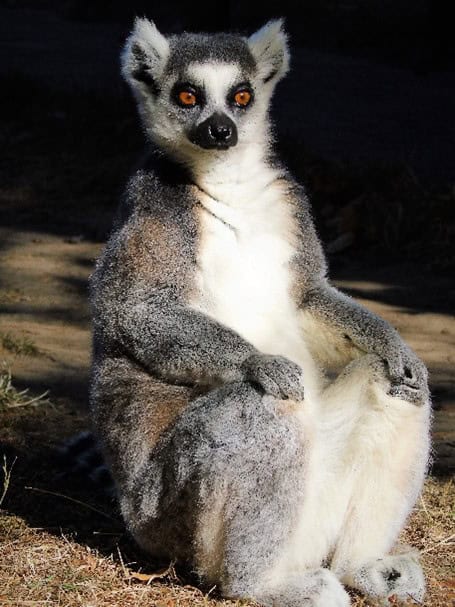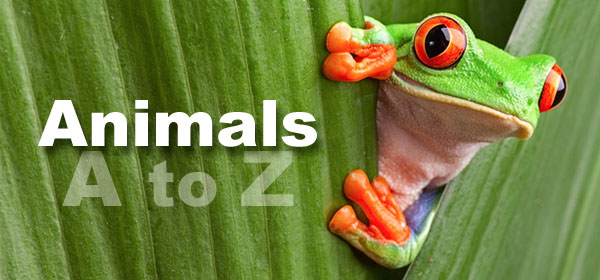My blog this week is focusing on lemurs in celebration of World Lemur Day which is held on the last Friday in October every year. This year, it falls on the 25th. All lemur species are endemic to Madagascar and there are over 110 species ranging in size from the 30-gram Berthe’s mouse lemur to the 6-9.5kg indri. There are subfossil records that show extinct lemurs as heavy as 85kg and as large as a gorilla! Madagascar lacks the dominant form of primates distributed worldwide but instead it has a niche filled by an older group of primates, lemurs.
Wingham Wildlife Park is currently home to two species of lemur; the black and white ruffed lemur (housed near the lake) and the ring-tailed lemur (housed in the Lemur Walkthrough). We have three black and white ruffed lemurs and all of them are females; Dubh, Rahona and Remmy who arrived at the park earlier this year from Fota Wildlife Park in Ireland. The ring-tailed lemurs are a bachelor group; Scruff, Armi, Maki and Monty all arrived at the park earlier this year too from Africa Alive in Suffolk.
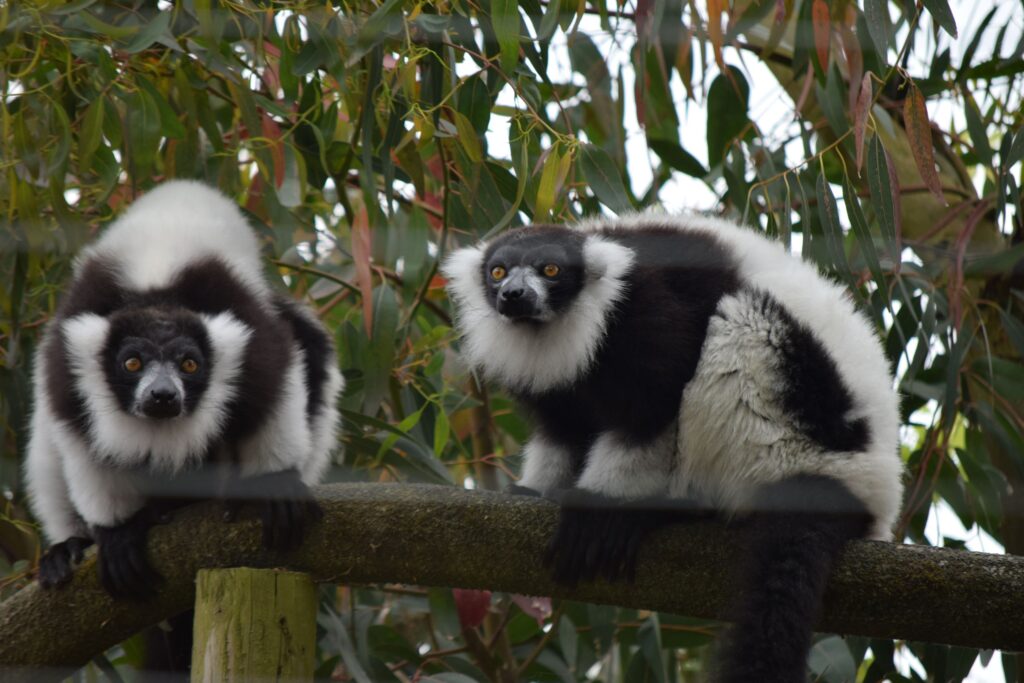
Black and white ruffed lemurs
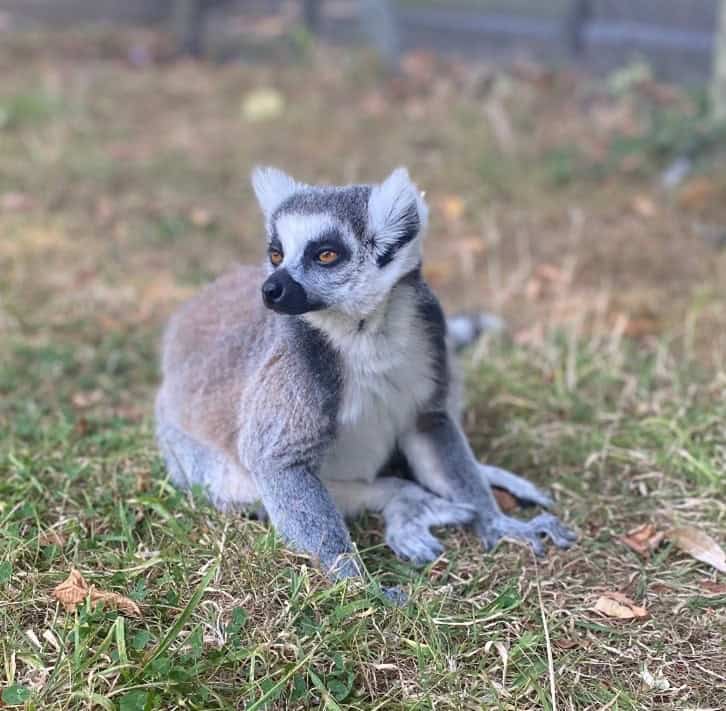
Ring-tailed lemur
Lemurs, like all primates, are highly communicative but they are less visually expressive in comparison to monkeys and apes. Ring-tailed lemurs scent mark their territories and males take part in a behaviour called “stink fighting.” This is where they cover their tails in scent from their armpits before waving it at rival males. Whilst these scents aren’t always too noticeable to us, you are very likely to hear other forms of lemur communication. You may have been fortunate enough to hear our lemurs vocalise at the park, if you haven’t it is certainly a unique sound that I don’t think you will have heard before. Ring-tailed lemurs have over 20 known vocalisations but the black and white ruffed lemurs have one of the noticeable vocalisations of all the animals at the park. Black and white ruffed lemurs are renowned for a call that sounds like a cross between a roar and a scream. Vocalisations are made for lots of different reasons but one of the main reasons that lemurs will call is if there is a predator nearby and they want to alert their troop.
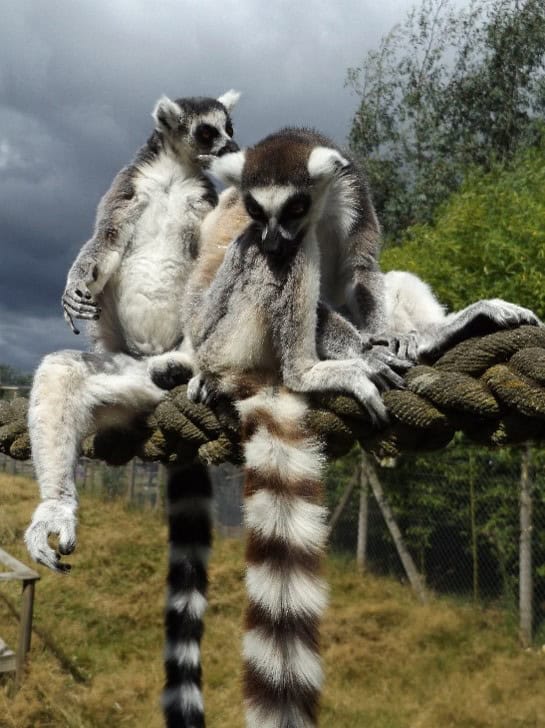
Ring-tailed lemurs
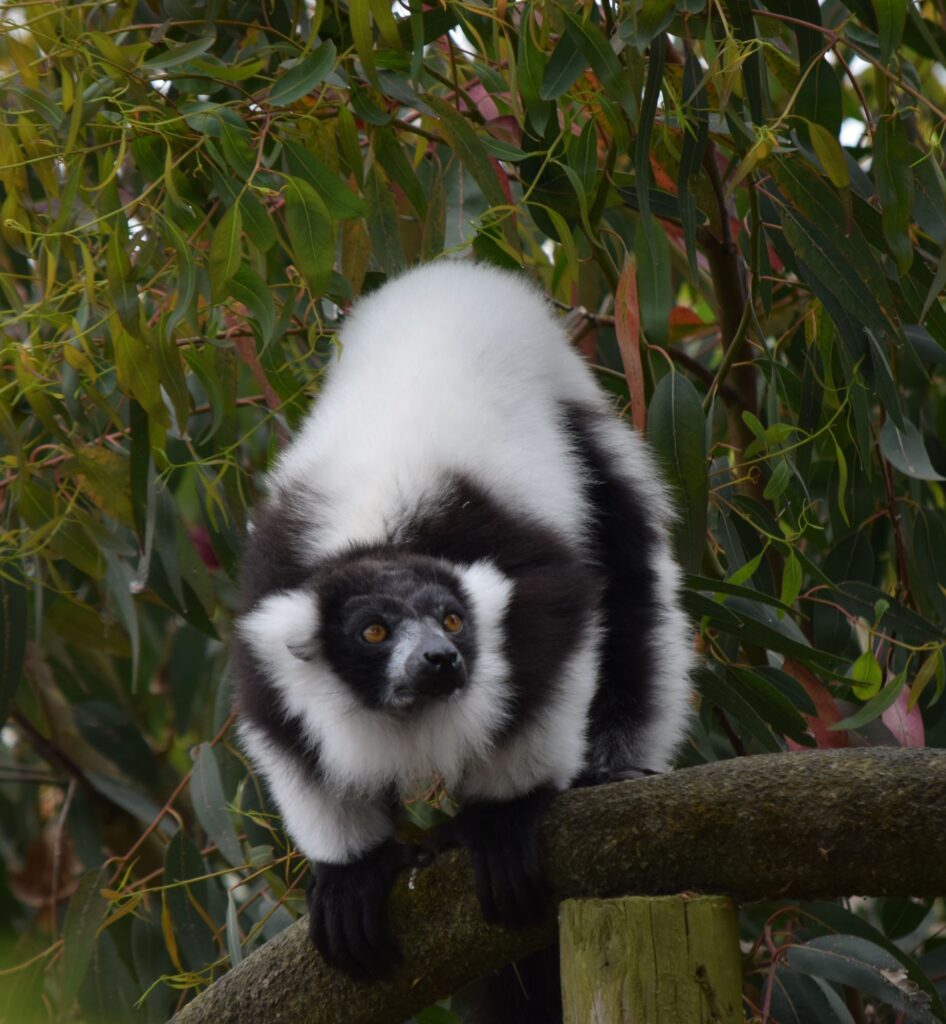
Black and white ruffed lemur
Madagascar is a biodiversity hotspot making it a popular location for ecotourism. If you ever get the chance to travel to the island to see the distinctive and amazing wildlife, your visit will help support local people which in turn can encourage locals to save the forests for ecotourism purposes. With 98% of lemur species threatened with extinction and 31% critically endangered, the time to act is now. It’s thought that over 90% of Madagascar’s biodiversity is completely unique to the island. Their habitats is often cut down for illegal logging and forest clearing for agriculture and mining. Lemurs are often hunted for food and in particular the aye-aye faces even more pressure from hunting. This is due to their bizarre appearance, many people in Madagascar regard them as an omen of sickness, death, or evil. Lemurs also are at risk from invasive species such as dogs and cats that have been introduced by humans.
Today conservation wildlife parks like us have huge potential to restore species, there are several species that have been saved from extinction through care at zoos, aquariums, botanical gardens and seed banks. Aswell as collaborative breeding programmes that have been able to restore species, so next time you come to visit why not come along to our ring-tailed lemur talk at 2:45pm to learn more about our troop.
